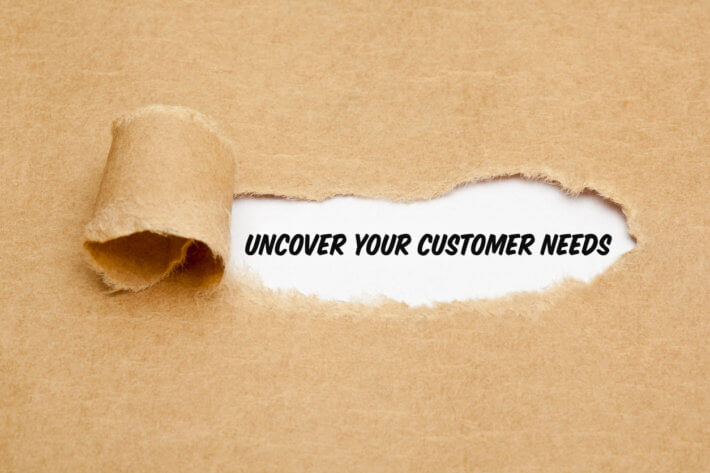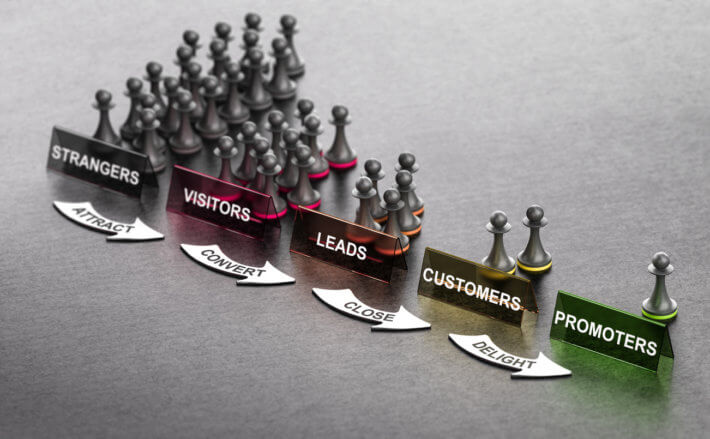B2B Sales: Eight Steps to Excellence in the Modern Age

The world of B2B sales techniques can be a confusing landscape. “Confusing” because it’s hard to know when to rely upon traditional B2B sales techniques and when to embrace newer approaches.
Certainly, B2B sales are more complex than B2C sales – and despite the information revolution – this complication persists. Many of the current challenges are the same as those from the by-gone era when a salesperson literally spent his days knocking on doors. Ultimately staying on the job for 40 years before retiring with a gold watch.
In B2B sales, what has remained the same?
We still have the web of multiple stakeholders. Imagine that you are selling lighting systems for buildings. One stakeholder is the electrical contractor, who installs the lighting. Another is the general contractor, who oversees this installation. Another is the architect, who recommends lighting. And then there are the actual workers who install the lights; not to mention the ultimate building owner. And then people who will inhabit the building. These stakeholder groups are largely unchanged since the dawn of electric lights.

Another enduring opportunity (or plight) in B2B sales is the concentration of buying power. In the lighting example, one architect could recommend a lighting scheme for hundreds of buildings. A win with an influencer like this would be huge. Much bigger than a sale to a consumer who walks into the lighting store.
A third persisting challenge is the length of the sales cycle. A homeowner may likely choose a lighting fixture within a single visit to the store. But with the many stakeholders involved, the B2B sale can play out over months. And in some markets, even years.
In B2B sales, what has changed?
Of course, the greater availability of information is the biggest change in the last century. As a result, buyers will make most of their buying decision before even speaking with a salesperson. How much, you ask? Estimates vary between 60% – 80%.
We shouldn’t see this change as something bad, but just as a reality of the modern age. Success will arise from leveraging the timeless truths of professional salesmanship within the information age. And thus, the eight steps to B2B sales excellence.
B2B Sales: Eight Steps to Excellence
1. Execute a marketing campaign that focuses on the particular stakeholder persona
If 60% – 80% of the sales process occurs before engagement with a salesperson, we’d be foolish to only focus on the remaining 20% – 40%. Therefore, we begin with adequate marketing cover. Our first two steps focus on the marketing aspect.
In the lighting example, each stakeholder persona has a different job-to-be-done. The architect has the job of design the building. He will have many criteria for the lighting, including aesthetics and current trends. The electrical contractor, performing the job of installing the lighting, will have additional criteria, such as speed of installation, product availability and adherence to local building codes.
Meanwhile, the building manager is going to be more focused on the quality of light, the availability of replacement parts, and the amount of maintenance required.
When creating any marketing artifacts, be intentional about the stakeholder. You will likely need multiple campaigns for each major stakeholder group.
2. Provide the prospect tools based upon where they are in the buying cycle
Now that we’re aware of who we’re marketing to, we need to provide timely information for our prospects. That is, we have different artifacts for them along each step in their journey along the buyer’s cycle.
Though we’re speaking of “marketing”, avoid the mentality that we’re “selling to the prospect.” Instead, take the position that we are helping them. Providing them information they need to solve their problem. And hopefully, your product will be the solution.
Perhaps you already have a buyer’s cycle (or “buyer’s journey”) model. If not, it’s time to find one. The marketing support firm HubSpot presents these as five stages for B2B sales:
- Awareness: The prospect becomes aware of their need and of your solution.
- Consideration: The prospect evaluates how well your solution, and others, will meet their need.
- Preference: The prospect will determine which solution they want.
- Purchase: The prospect purchases the solution.
- Repurchase: The prospect re-purchases.
Other models have “Referral” for a final stage, in which the prospect – now a customer – will refer your solution to others.

Select a model for the buying cycle – and ensure that your company has lots of published content and solutions that are tailored to each stage. Consider written media such as blogs and whitepapers. Videos are a great way to deliver your message.
Be findable with speaking engagements and trade show participation. And finally, don’t be afraid to experiment with emerging methods – such as chat bots. Regardless of the packaging, be sure that each bit is delivered with both a stakeholder in mind as well as their position within the buying cycle.
3. Focus on their problem first
Once they do engage with you within the B2B sales process, it will be tempting to assume that they want to immediately hear all the technical aspects of your product. Resist this, and instead, make sure that you understand their problem first. Ask open-ended questions. Put yourself in their shoes. Try to determine how they will measure success.
Since they have reached out to you, you know that you’re a contender for the business. Some training in questioning techniques, such as what you’d receive within a New Product Blueprinting workshop is invaluable.
For example the “What and Why” probing methods within New Product Blueprinting are designed to uncover the prospect’s problem with complete clarity. Also, tools such as Blueprinter® software are invaluable for capturing critical information about the prospect’s needs.
4. Uncover the stakeholders in the decision-making process
Remember, most likely, the person you’re speaking with most likely cannot make the decision by themselves. Who are the other stakeholders? What are their jobs-to-be-done? Their challenges? How would they judge success? Take good notes and try to uncover all these stakeholders and their role in decision making.
5. Resist overselling with every word
They have reached out to you. Being over-eager will make them think they’ve made a mistake. Begin by doing more learning than educating them. Just ask questions and listen. Resolve to refer them elsewhere if you’re not a good fit.

Establish where they are in the buying cycle. Are they just beginning? Do they know of your competitors, and which ones? Do they have a preference yet? Or, are they actually ready to purchase?
6. Don’t rush the process
The B2B sale can take weeks, months, or even years. Generally, you cannot win the sale in a few days, but you can lose it. You must get in sync with the natural rhythm at which your customer wants to buy. Don’t press or push too hard.
7. Push for objections (what misalignment do they see?)
Often, because they want to avoid confrontation, your prospect may not reveal their concerns. Unfortunately, this politeness can mask real objections that you could speak to if you had the chance. However, if you ask them directly for their concerns, they will tell you.
8. Ask for the sale
In B2B sales, even though we avoid rushing the process, we still must ask for the sale! Listen carefully for cues that the customer is ready to move forward. They may ask for price or term sheets, for example. They might want proposals or NDAs or many such artifacts that are required for the actual sale.
Don’t be afraid to ask for the order, or even use the old method of the “assumptive close.” In the assumptive close, you assume that it will close and begin to move forward. Certainly, do not be afraid of traditional closing methods when the time is right.
Along these lines, when the customer is ready to buy and the closing process has begun, don’t go backwards! It’s not the time to rehash your product again or ask general questions about your prospect’s challenges. You should always be moving your prospect forward towards the close, never backwards.
The more things change, the more they stay the same.
In B2B sales, while the days have generally passed for cold calls and golf course deals, traditional methods still have a place. As long as we have certain structures in place.
For example, be sure that the sales organization is supported by a marketing system that can guide the prospect safely along the buying cycle. At a comfortable pace for them. In your sales conversations, make sure to uncover the key stakeholders – and also – be aware that individual prospects will likely be at a different buying cycle stage.
Be sure to ask good questions, focus on the problem first, and keep the right balance of promotion within the conversation. B2B sales is as exciting and lucrative as ever. Don’t be afraid of the complexity but embrace it. After all, it’s just as complicated for your competitors.
Comments